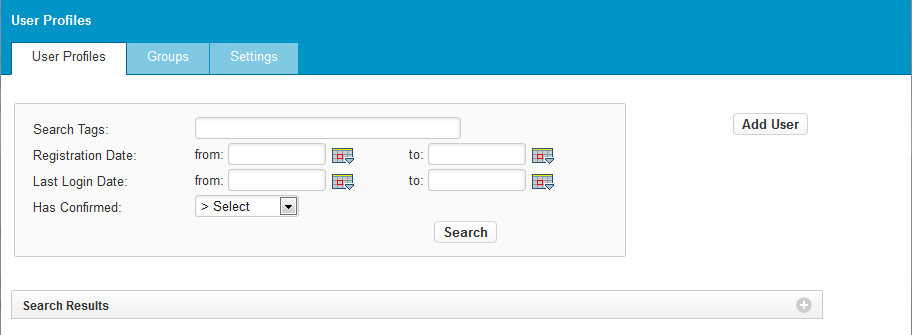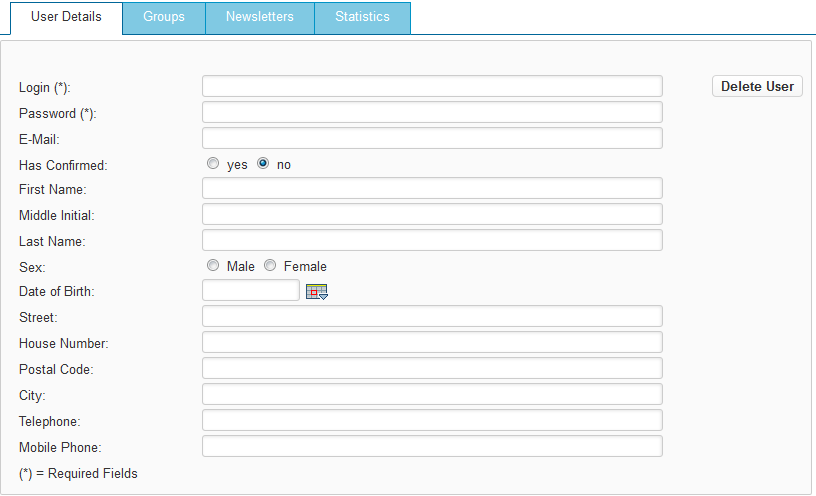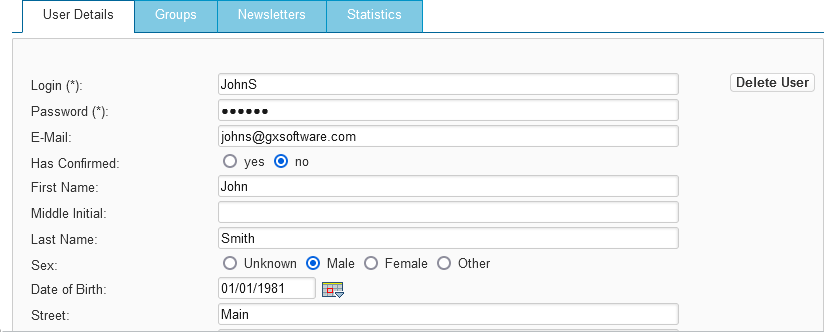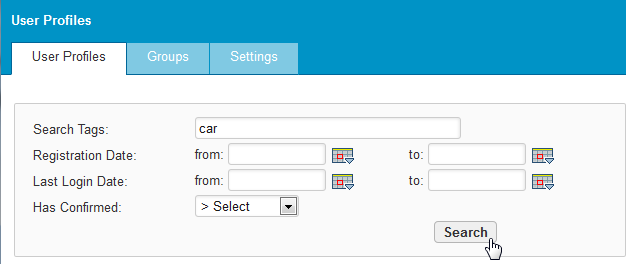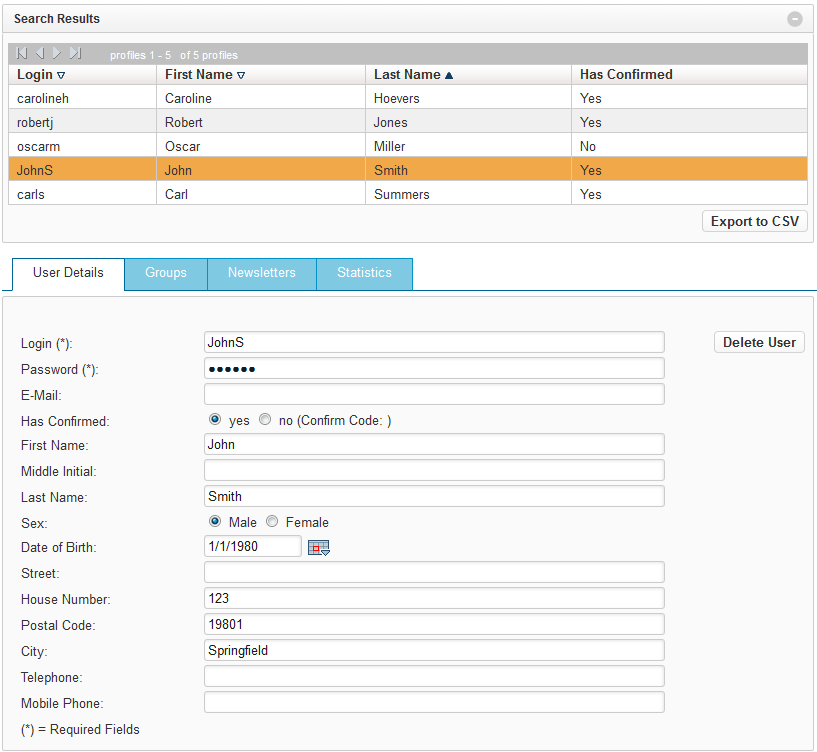User profiles allow you to target website visitors with specific content or restrict the content that certain website visitors are able to view. By creating users and groups and assigning authorization(s) to those groups, you have complete control over what these users can see and do on your website. A user always has to be part of one or more web groups in order to be granted access to restricted pages on a website. Authorization(s) to view specific website pages are assigned at the group level. To view and manage web users, navigate to Configuration > User Profiles.
In This Topic
Creating Users
To create a user profile, follow these steps:
- Click the [User Profiles] tab:
- Click [Add User]. Four tabs appear below "Search Results": [User Details], [Groups], [Newsletters], and [Statistics]:
- Enter the information for the new user in the [User Details] tab by filling in the fields. The fields "Login" and "Password" are mandatory — the rest of the fields are optional.
- Click [Apply]. The new user is created. For example:
Searching for Users
To view and/or modify a use's properties, click the [User Profiles] tab. At the top of the [User Profiles] tab, you can enter search criteria to find a user or users. Follow these steps:
- Specify the search parameter(s). You can search for a user in the following ways:
- Using a search term or terms. You can enter a first name and/or last name or a partial string. The wildcard characters "*" and "?" are not valid in a search string.
- By specifying a registration date range. To specify a date range, enter dates in the "from" and "to" fields in the format DD/MM/YYYY or click the calendar icon to select the "from" and "to" dates from a calendar.
- By specifying a date range within which the user last logged in. To specify a date range, enter dates in the "from" and "to" fields in the format DD/MM/YYYY or click the calendar icon to select the "from" and "to" dates from a calendar.
- According to whether or not the user has confirmed. Click the down arrow next to "Has Confirmed" and select "Yes" or "No".
Combinations of the above parameters can also be used to narrow the search. If you use multiple search criteria, only the users that match all criteria are returned.
- After specifying the search parameter(s), click [Search]. All users that match the query will be shown in the "Search Results" section. If you leave all the fields blank, all users will be returned.
In the example below, the search term "car" is specified:
The following is an example result from the search:
The search returned the users "carolineh", "carls", and "oscarm" because they match the partial search term "car".
In the following example, users who registered between June 6, 2013 and January 14 2014 are searched for:
Modifying User Profiles
To modify a user's details, perform a search as described in the section Searching for Users. When the results are returned, click the user whose details you want to modify in the "Search Results" list. For example:
The full details for the user now appear:
Make the modifications to the user's details and then click [Apply]. The changes are saved.
Assigning Newsletter Subscriptions to Users
You can create newsletters and e-mail them to selected recipients. For each user, you can assign a subscription to one or more existing newsletters.
Before you can assign a newsletter subscription to a user, the newsletter and its corresponding mailing list must have already been created. Once created, all available mailing lists are shown on the [Newsletters] tab.To assign a newsletter subscription to a user, follow these steps:
Select the check box next to the newsletter(s) you want to send to the user. For example:
Select the format in which the newsletter will be sent. The options are:
- HTML — the e-mail will be formatted as HTML.
- Text — the e-mail will be formatted as plain text.
Click [Apply].
User Statistics
On the [Statistics] tab, you can view details regarding a user's website visits and account statistics. For example:
The meaning of the statistics is as follows:
| Statistic | Description |
|---|---|
| Registration date | The date and time the user's profile was created. |
| Number of visits | The number of times the user has logged in to the website since their user profile was created. |
| Last modified | The date and time that the user's profile was last modified. |
| Last visit | The date and time that the user most recently logged in. |
Exporting User Properties
User properties can be exported in order to be used in another application or for back-up purposes. The data is exported in comma separated values (CSV) format. To export user data, follow these steps:
- Enter the search criteria for the user or users whose data you want to export. To return all users, leave all the search fields blank.
- Click [Search]. The user or users matching the search criteria are returned.
- Click [Export to CSV].
- At the "File Download" prompt, click [Save].
- Specify the location where you want to save the exported user data. By default the name of the exported file is "GX_user_profiles_[host name]_[current date].csv".
- Click [Save].
Exported User Data Example
The following shows an example of exported user data opened in a Microsoft Excel spreadsheet.
